Answered step by step
Verified Expert Solution
Question
1 Approved Answer
1. 1) Calculate the actual test volumes by test type and billing party performed by the company in 2015. Then, prepare a schedule of the
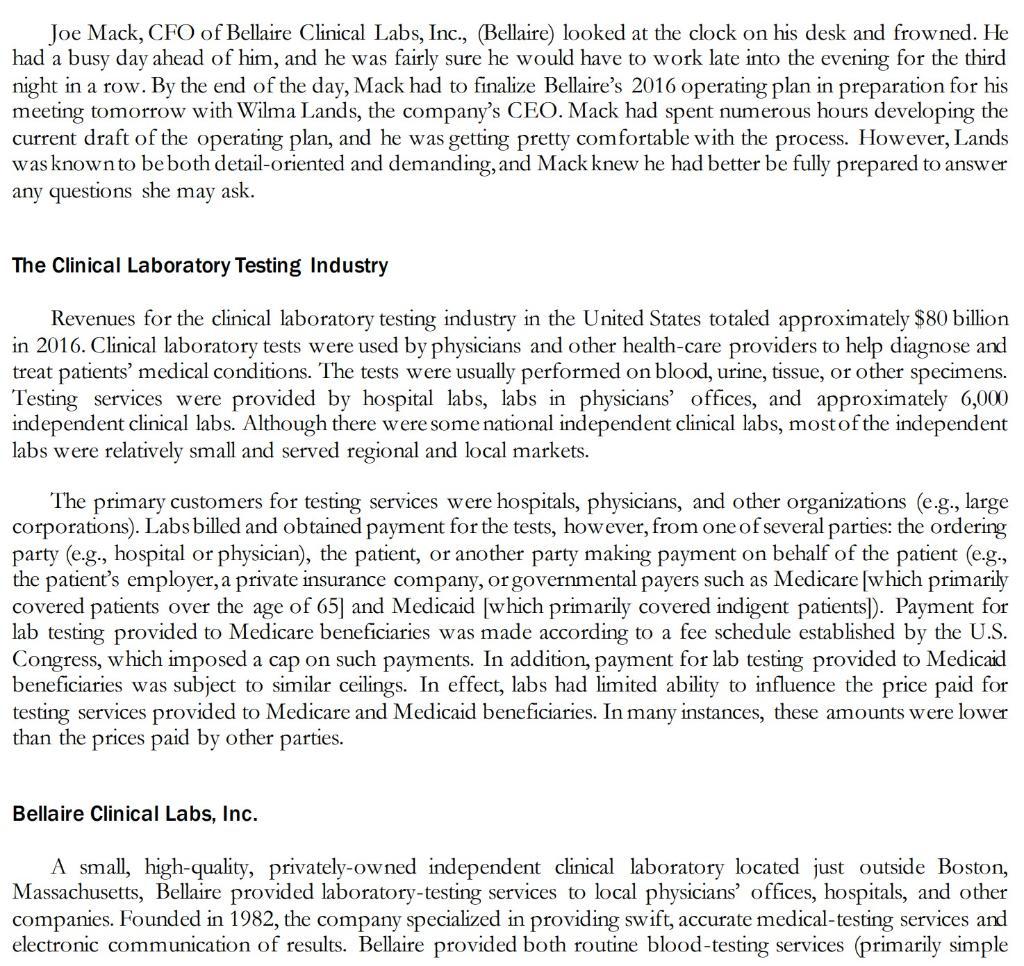
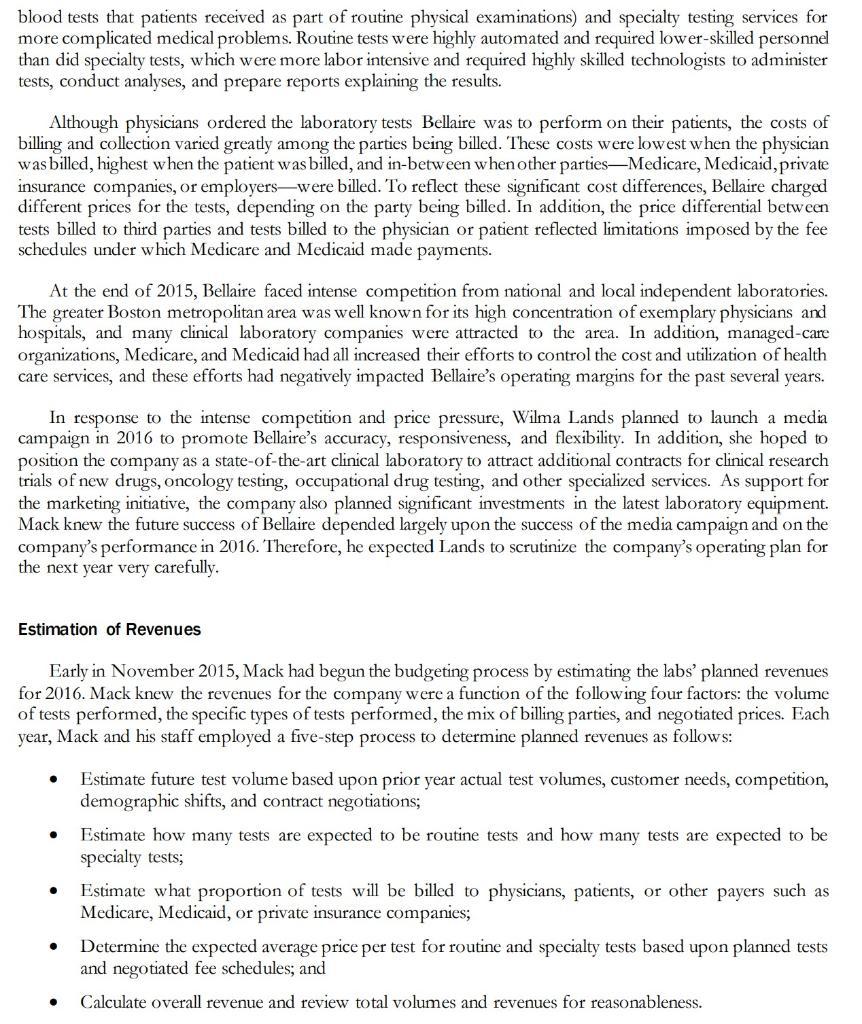
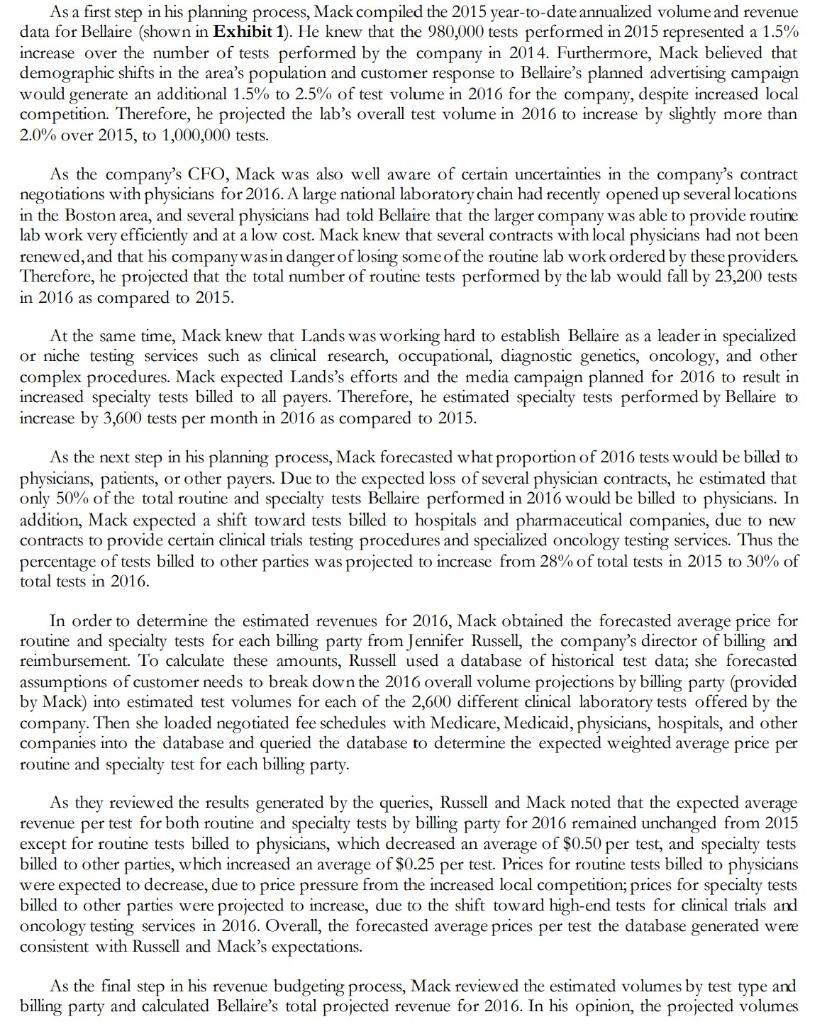
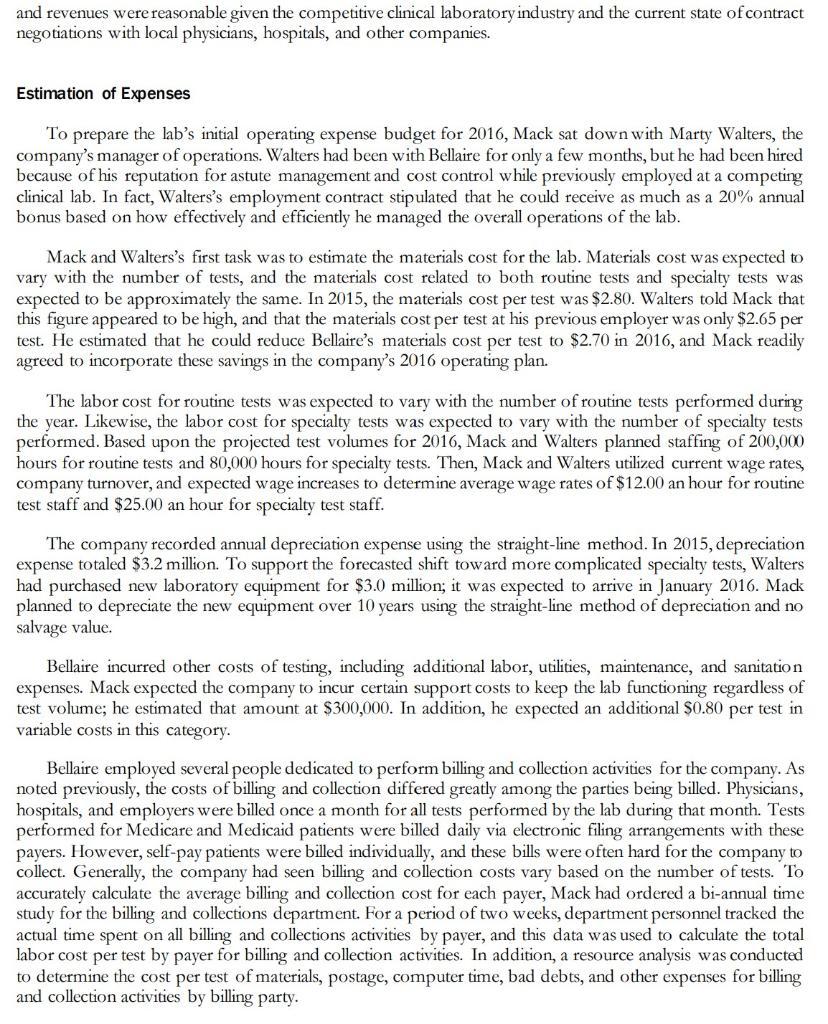
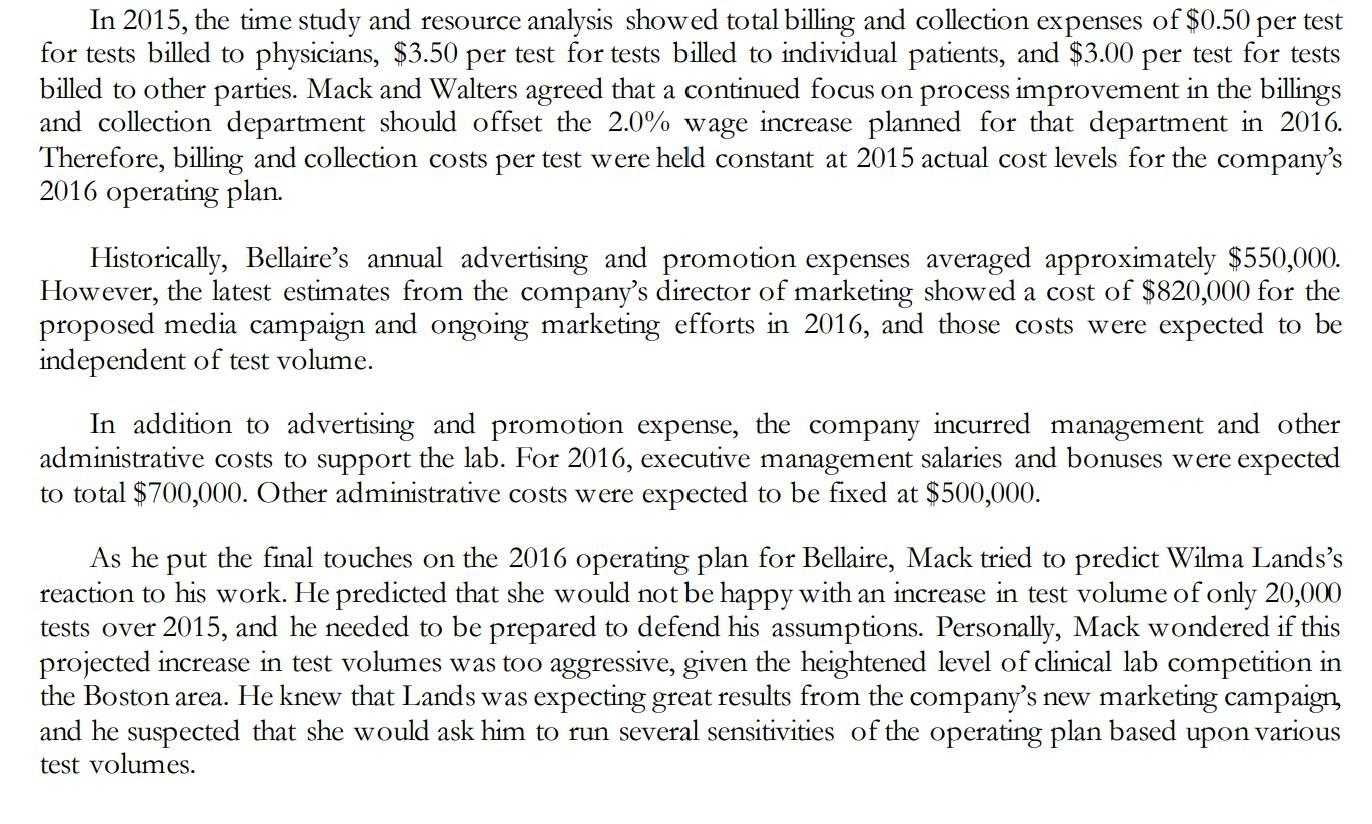
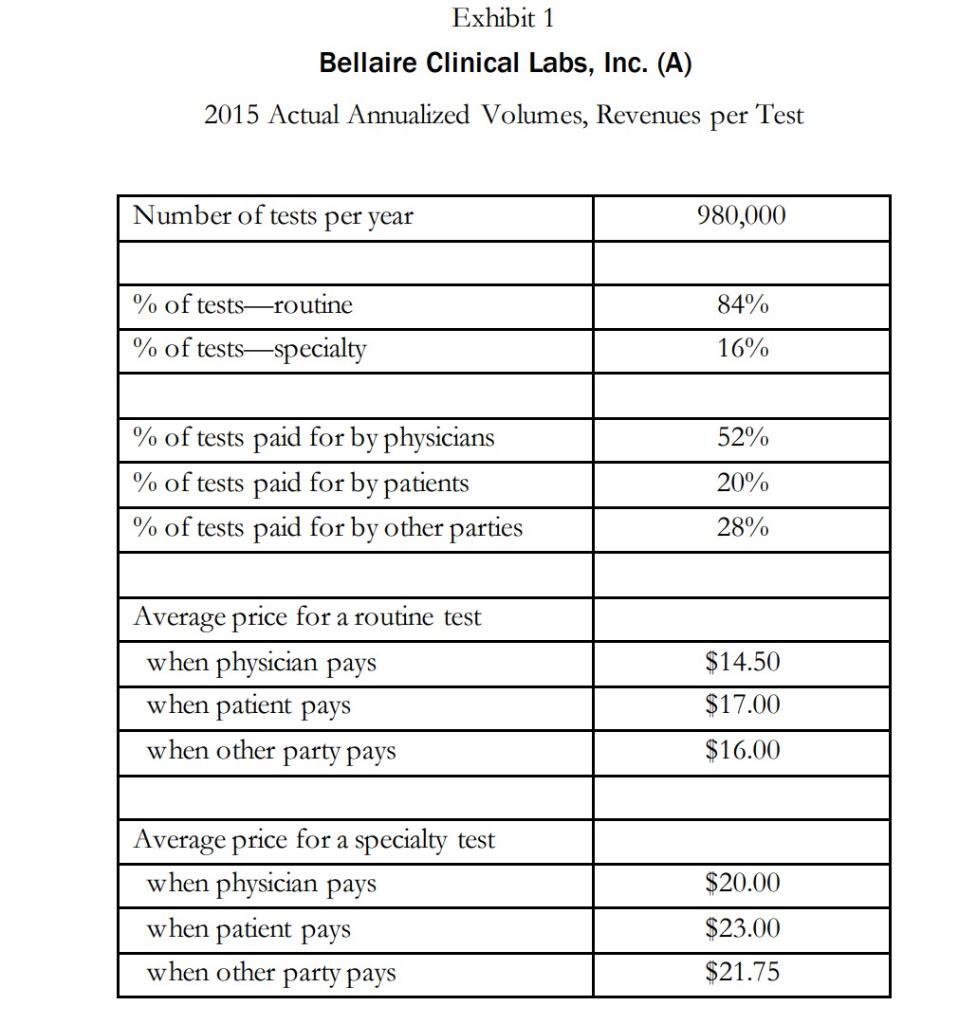
1. 1) Calculate the actual test volumes by test type and billing party performed by the company in 2015. Then, prepare a schedule of the projected test volumes and revenues by test type and billing party for 2016. How do the main trends in volumes and prices Mack predicted affect Bellaire’s planned 2016 revenues?
Then, 2) prepare the Bellaire’s 2016 operating plan and calculate the routine/specialty mix and payer mix percentage for 2016. What changes, if any, would you make to Mack’s budgeting process?
Joe Mack, CFO of Bellaire Clinical Labs, Inc., (Bellaire) looked at the clock on his desk and frowned. He had a busy day ahead of him, and he was fairly sure he would have to work late into the evening for the third night in a row. By the end of the day, Mack had to finalize Bellaire's 2016 operating plan in preparation for his meeting tomorrow with Wilma Lands, the company's CEO. Mack had spent numerous hours developing the current draft of the operating plan, and he was getting pretty comfortable with the process. However, Lands was known to be both detail-oriented and demanding, and Mack knew he had better be fully prepared to answer any questions she may ask. The Clinical Laboratory Testing Industry Revenues for the clinical laboratory testing industry in the United States totaled approximately $80 billion in 2016. Clinical laboratory tests were used by physicians and other health-care providers to help diagnose and treat patients' medical conditions. The tests were usually performed on blood, urine, tissue, or other specimens. Testing services were provided by hospital labs, labs in physicians' offices, and approximately 6,000 independent clinical labs. Although there were some national independent clinical labs, most of the independent labs were relatively small and served regional and local markets. The primary customers for testing services were hospitals, physicians, and other organizations (e.g., large corporations). Labs billed and obtained payment for the tests, however, from one of several parties: the ordering party (e.g., hospital or physician), the patient, or another party making payment on behalf of the patient (e.g., the patient's employer, a private insurance company, or governmental payers such as Medicare [which primarily covered patients over the age of 65] and Medicaid [which primarily covered indigent patients]). Payment for lab testing provided to Medicare beneficiaries was made according to a fee schedule established by the U.S. Congress, which imposed a cap on such payments. In addition, payment for lab testing provided to Medicaid beneficiaries was subject to similar ceilings. In effect, labs had limited ability to influence the price paid for testing services provided to Medicare and Medicaid beneficiaries. In many instances, these amounts were lower than the prices paid by other parties. Bellaire Clinical Labs, Inc. A small, high-quality, privately-owned independent clinical laboratory located just outside Boston, Massachusetts, Bellaire provided laboratory-testing services to local physicians' offices, hospitals, and other companies. Founded in 1982, the company specialized in providing swift, accurate medical-testing services and electronic communication of results. Bellaire provided both routine blood-testing services (primarily simple Joe Mack, CFO of Bellaire Clinical Labs, Inc., (Bellaire) looked at the clock on his desk and frowned. He had a busy day ahead of him, and he was fairly sure he would have to work late into the evening for the third night in a row. By the end of the day, Mack had to finalize Bellaire's 2016 operating plan in preparation for his meeting tomorrow with Wilma Lands, the company's CEO. Mack had spent numerous hours developing the current draft of the operating plan, and he was getting pretty comfortable with the process. However, Lands was known to be both detail-oriented and demanding, and Mack knew he had better be fully prepared to answer any questions she may ask. The Clinical Laboratory Testing Industry Revenues for the clinical laboratory testing industry in the United States totaled approximately $80 billion in 2016. Clinical laboratory tests were used by physicians and other health-care providers to help diagnose and treat patients' medical conditions. The tests were usually performed on blood, urine, tissue, or other specimens. Testing services were provided by hospital labs, labs in physicians' offices, and approximately 6,000 independent clinical labs. Although there were some national independent clinical labs, most of the independent labs were relatively small and served regional and local markets. The primary customers for testing services were hospitals, physicians, and other organizations (e.g., large corporations). Labs billed and obtained payment for the tests, however, from one of several parties: the ordering party (e.g., hospital or physician), the patient, or another party making payment on behalf of the patient (e.g., the patient's employer, a private insurance company, or governmental payers such as Medicare [which primarily covered patients over the age of 65] and Medicaid [which primarily covered indigent patients]). Payment for lab testing provided to Medicare beneficiaries was made according to a fee schedule established by the U.S. Congress, which imposed a cap on such payments. In addition, payment for lab testing provided to Medicaid beneficiaries was subject to similar ceilings. In effect, labs had limited ability to influence the price paid for testing services provided to Medicare and Medicaid beneficiaries. In many instances, these amounts were lower than the prices paid by other parties. Bellaire Clinical Labs, Inc. A small, high-quality, privately-owned independent clinical laboratory located just outside Boston, Massachusetts, Bellaire provided laboratory-testing services to local physicians' offices, hospitals, and other companies. Founded in 1982, the company specialized in providing swift, accurate medical-testing services and electronic communication of results. Bellaire provided both routine blood-testing services (primarily simple
Step by Step Solution
★★★★★
3.43 Rating (150 Votes )
There are 3 Steps involved in it
Step: 1
1 Actual test volumes by test type and billing party performed by the company in 2015 Test type Billing party Number of tests Routine Physician 515200 Routine Patient 196000 Routine Other party 168800 ...
Get Instant Access to Expert-Tailored Solutions
See step-by-step solutions with expert insights and AI powered tools for academic success
Step: 2

Step: 3

Ace Your Homework with AI
Get the answers you need in no time with our AI-driven, step-by-step assistance
Get Started


